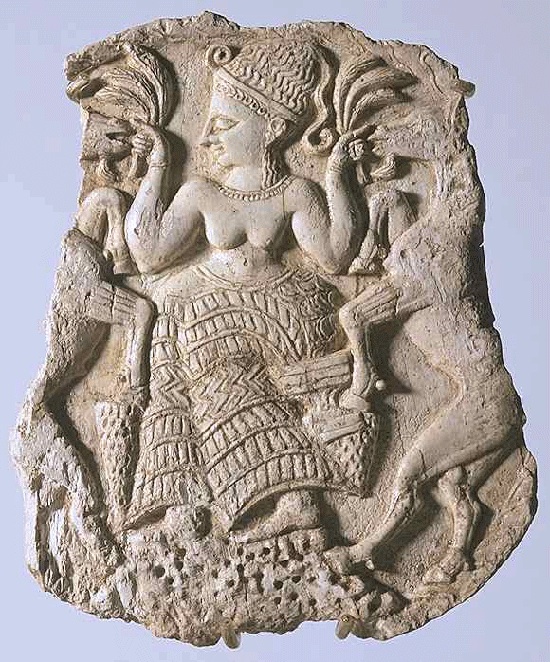
The Bible is often presented by believers as a monolithic creation, as if it descended from Heaven whole, perfect, and in King James’ English. The truth, as in so many things, is so much more complicated and interesting. The text of the Hebrew Tanakh which became what Christians dismissively call the “Old Testament” began as an oral tradition that was eventually written down in Hebrew and Aramaic by unknown scribes over hundreds of years in what’s called “abjad” script – a system of writing in which only the consonants are set down and the reader is intended to fill in the vowels. These individual writings were eventually collected into a generally accepted canon by around 400 BCE and finally codified at a later but unknown date, probably by 100 CE.
And that’s just the “Old Testament”.
Similarly, the New Testament is a disparate collection of texts from numerous and mostly unknown authors – despite traditional ascriptions – writing from between around 50 to 200 CE. None of the books of the New Testament were written during the lifetime of a historical Jesus. And according to the Catholic Encyclopedia, the popular conception of one singular ancient council of the Church that decided what books were in and what were out is inaccurate:

The idea of a complete and clear-cut canon of the New Testament existing from the beginning, that is from Apostolic times, has no foundation in history. The Canon of the New Testament, like that of the Old, is the result of a development, of a process at once stimulated by disputes with doubters, both within and without the Church, and retarded by certain obscurities and natural hesitations, and which did not reach its final term until the dogmatic definition of the Tridentine Council.
That Tridentine Council didn’t happen until 1545, at which point the 27 books we now know as the New Testament were finally confirmed. There are other books, though. Among them are texts which describe teachings of Christ that the modern Christian religion would find awkward to say the least, like the Gospel of Mary, which rejects the traditional depiction of Mary Magdalene as a prostitute, argues for female leadership in the church, and depicts Jesus as a Buddha-like philosopher urging his followers to find salvation in their own minds.
There is a theory that books like the Gospel of Mary were rejected from the New Testament by the male hierarchy of the early church who sought to cement their own dominance. Many of these books were deemed heretical and only existed in the references of their orthodox condemnations until the rediscovery of caches like Nag Hammadhi.
Similarly, the Dead Sea Scrolls demonstrated that the Hebrew Bible in its early incarnations was much more varied before its codification than had been supposed. What if the early Jews or the scholars who translated their writings also omitted any subjects which might have been politically inconvenient? What if, for example, God – Yahweh – once had a wife?
“You might know him as Yahweh, Allah or God. But on this fact, Jews, Muslims and Christians, the people of the great Abrahamic religions, are agreed: There is only one of Him,” writes Stavrakopoulou in a statement released to the British media. “He is a solitary figure, a single, universal creator, not one God among many…or so we like to believe.”
“After years of research specializing in the history and religion of Israel, however, I have come to a colorful and what could seem, to some, uncomfortable conclusion that God had a wife,” she added.
Stavrakopoulou bases her theory on ancient texts, amulets and figurines unearthed primarily in the ancient Canaanite coastal city called Ugarit, now modern-day Syria. All of these artifacts reveal that Asherah was a powerful fertility goddess.
Asherah’s connection to Yahweh, according to Stavrakopoulou, is spelled out in both the Bible and an 8th century B.C. inscription on pottery found in the Sinai desert at a site called Kuntillet Ajrud.
“The inscription is a petition for a blessing,” she shares. “Crucially, the inscription asks for a blessing from ‘Yahweh and his Asherah.’ Here was evidence that presented Yahweh and Asherah as a divine pair. And now a handful of similar inscriptions have since been found, all of which help to strengthen the case that the God of the Bible once had a wife.”
Also significant, Stavrakopoulou believes, “is the Bible’s admission that the goddess Asherah was worshiped in Yahweh’s Temple in Jerusalem. In the Book of Kings, we’re told that a statue of Asherah was housed in the temple and that female temple personnel wove ritual textiles for her.”
Stavrakopoulou isn’t the first to make this claim, and other religious scholars agree with her. J. Edward Wright, president of both The Arizona Center for Judaic Studies and The Albright Institute for Archaeological Research says:
“Asherah was not entirely edited out of the Bible by its male editors,” he added. “Traces of her remain, and based on those traces, archaeological evidence and references to her in texts from nations bordering Israel and Judah, we can reconstruct her role in the religions of the Southern Levant.”
Asherah – known across the ancient Near East by various other names, such as Astarte and Istar – was “an important deity, one who was both mighty and nurturing,” Wright continued.
“Many English translations prefer to translate ‘Asherah’ as ‘Sacred Tree,'” Wright said. “This seems to be in part driven by a modern desire, clearly inspired by the Biblical narratives, to hide Asherah behind a veil once again.”
Hat tip: RichardDawkins.net Happy birthday, Mr. Dawkins!


[…] of most people who have studied the New Testament. The consensus of contemporary scholars is that the New Testament is cobbled together from various sources. Many of its writers were not even who they claimed to be according to Biblical scholar Bart D. […]